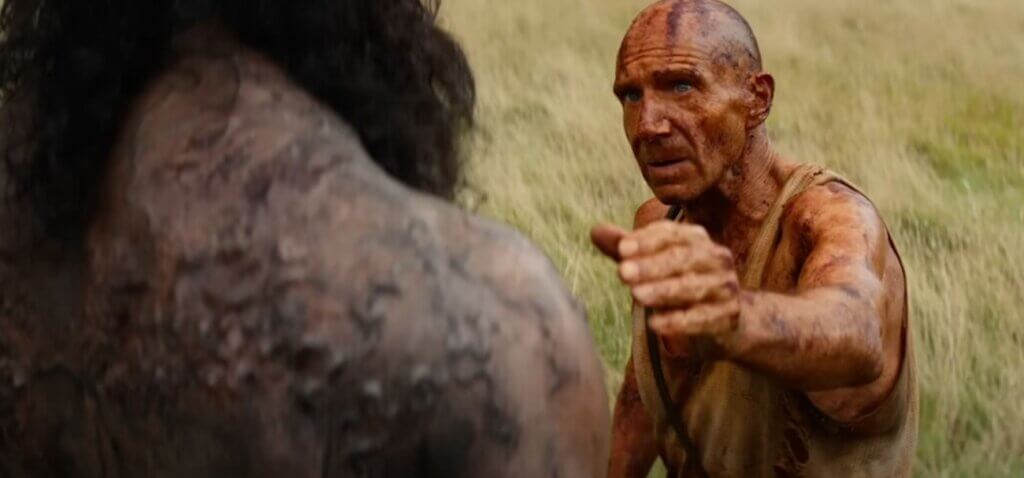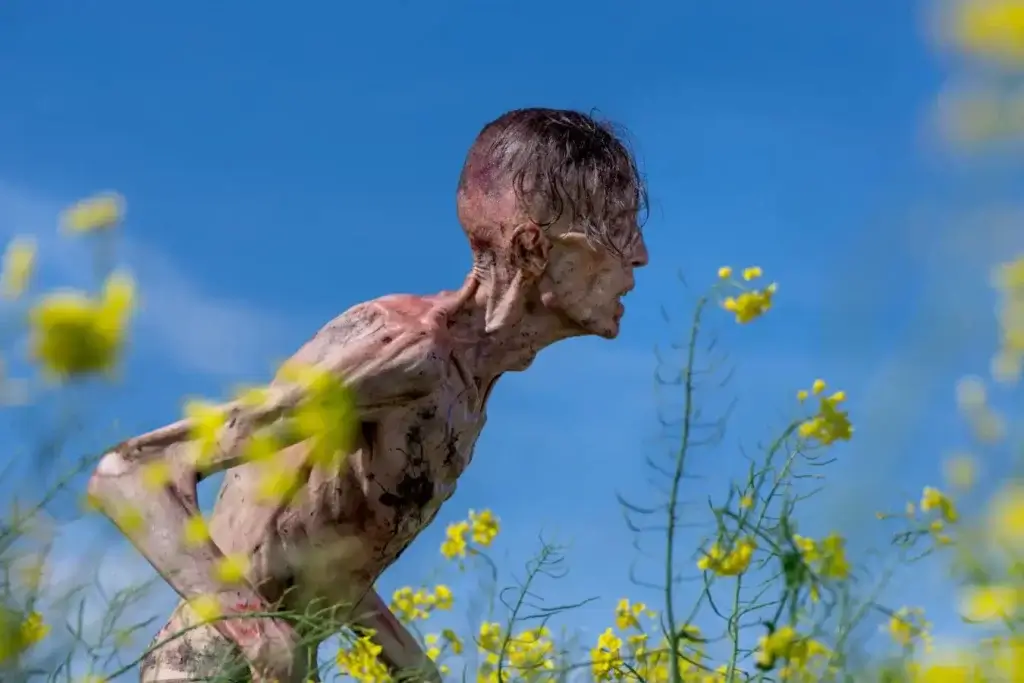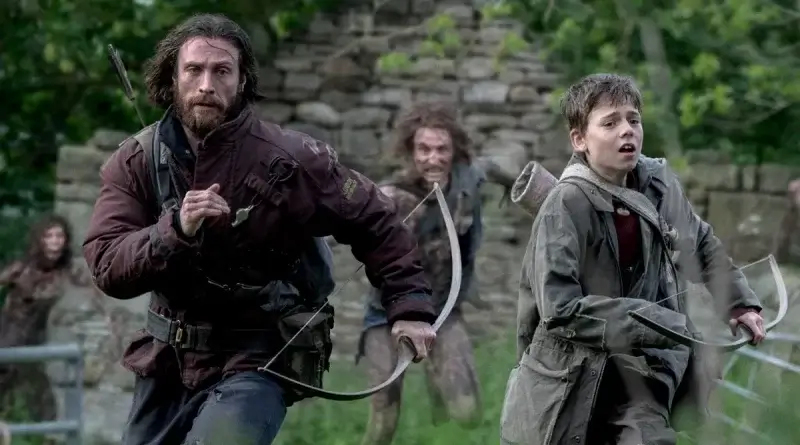Review: 28 Years Later (2025), Danny Boyle’s Best Work in Years
As someone who thinks Trainspotting (1996) is one of the greatest films, if not the greatest film of all time, I have great respect for Danny Boyle. I did, however, write an essay on Danny Boyle’s creative decline as a director, chronicling his work from Shallow Grave to T2 Trainspotting. I still stand by what I wrote, as I think T2 was little more than a vapid throwback to his greatest work, to say nothing of his mainstream forays into mediocre Hollywood blockbusters.
However, I think he finally recaptured the magic of one of his greatest films, and (in my humble opinion), the greatest zombie film ever made, 28 Days Later (2002). While 28 Years Later (2025) doesn’t outshine the original, it recreates the same frenetic, existential horror while slipping in social commentary and self-referential elements that make the ride that much more enjoyable.
As you might have imagined, 28 Years Later takes place 28 years after the initial outbreak of the Rage virus from the first film. Mainland England is abundant in natural beauty, but remains unlivable for most humans, as zombies continue to roam the countryside. Some zombies resemble those from the first and second films, while others have devolved into giant slug-like creatures that can only crawl to catch their prey, and still others have evolved into “Alphas” that are faster, stronger, bigger, and more intelligent than the others.
The story follows Spike (Alfie Williams), a 12-year-old boy who lives with an island community off the coast of northern England, protected from the mainland by a natural causeway that floods with the tide. He lives with his father, Jamie (Aaron Taylor-Johnson), and his unwell mother, Isla (Jodie Comer). Isla’s illness causes her to be bedridden, suffering from hallucinations and constant pain. Spike and Jamie care for Isla, but Jamie has become increasingly distant from her, much to the frustration of Spike.
Jamie takes Spike out on the boy’s first expedition on the mainland. During their excursion, the two’s mission gets derailed, and they must stay on the mainland overnight until the tide subsides. While keeping watch, Spike sees a fire burning in the distance, as well as multiple boats moving along the coast. Jamie and Spike barely get out with their lives, and Spike feels humiliated that he wasn’t able to hunt the zombies as he had been trained to do. Jamie chooses to embellish their experience upon their return to the island, celebrating Spike as a hero. As everyone drinks to their success, Spike witnesses his father sneaking off with another woman.
When Spike confronts his father about the other woman and the possibility of getting medical treatment for his mother on the mainland, Jamie dismisses him. After distracting the community with a fire, Spike takes his mother to the mainland in search of Dr. Ian Kelson (Ralph Fiennes), a doctor rumored to still be alive close to where Spike and Jamie had spent the night. The remainder of the film follows 12-year-old Spike struggling to keep himself and his mother safe as they traverse the zombie-infested wilderness in search of a cure for her illness.

I won’t give away the ending of 28 Years Later, but I will say that it quite obviously paves the way for a sequel. The ending is one of the most controversial and head-scratching parts of the film, as it suddenly departs from the otherwise dark atmosphere of the rest of the film, launching into a brief but almost comical sequence involving a gang of Jimmy Sevile-styled humans.
For those who aren’t aware, Jimmy Sevile was a formerly beloved television and radio personality in the UK, who was later discovered to have used his fame to become one of the most prolific serial child molesters in the history of Great Britain.
What does the ending mean? What should we think when a 12-year-old boy encounters a gang wearing the eccentric fashions of a long-dead pedophile? Knowing the somewhat depraved side of Danny Boyle’s best work, I think this is simply a rather broad recrimination of social decay in our world. Even if you remove the fictional Rage virus, there are monsters everywhere around us — and we often celebrate the worst among them.
I don’t want to get too hung up on the ending, as I don’t think it defines 28 Years Later. As I said, I think it’s a wink to the audience about the ugliness of modern society, and also functions as a bridge to the next film.

What matters more is the roughly 110 minutes that precede this sequence, which are drenched with the terrifying, blood-soaked, frenetic imagery that has become a staple of work in which Danny Boyle teams up with producer Andrew McDonald, cinematographer Anthony Don Mantle, and writer Alex Garland. It was this collaboration that truly makes 28 Years Later a great film, as they tell a compelling story using beautiful but haunting visuals, moments of existential meditation interrupted by high-octane scares, and excellent performances from all of the lead actors.
If you’re like me, you’ve longed for the genuine fear and existential dread that a horror film like 28 Days Later could produce. While the third installment in the series doesn’t quite meet the horrifying beauty of the first film, it comes exceptionally close and far exceeds expectations. More than anything, 28 Years Later proves that, when he has the right team around him, Danny Boyle still has the chops to create movie magic in its purest form.
28 Years Later (2025) Movie Rating: ★★★★½ out of 5
If you’d like to watch 28 Years Later (2025), the film is currently available to stream, rent, or purchase via Amazon. For more film reviews like this one, be sure to check out the Philosophy in Film homepage!

